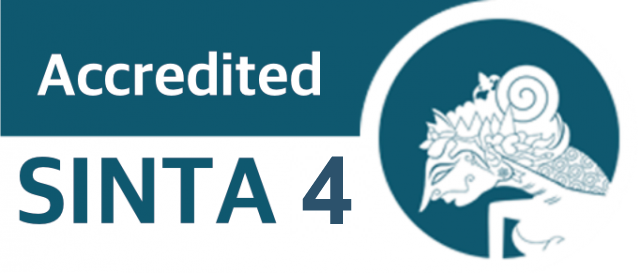Developing Web-Enhanced Physics Learning Media on Renewable Energy Using Google Sites
DOI:
10.29303/jpm.v20i6.10285Published:
2025-10-27Issue:
Vol. 20 No. 6 (2025)Keywords:
Google Sites; Learning Media; Web-Enhanced CourseArticles
Downloads
How to Cite
Downloads
Metrics
Abstract
Education in Indonesia requires the utilization of technology to improve the quality of learning. The Web-Enhanced Course (WEC) model offers flexibility in accessing learning materials while supporting the effectiveness of face-to-face instruction. Google Sites serves as a relevant medium, integrating text, video, and interactive features that foster students’ motivation and engagement. This study aims to develop physics learning media based on the Web Enhanced Course model using Google Sites, focusing on renewable energy topics, to evaluate its feasibility and assess students’ responses in grade X of senior high schools. This research employed a development method adapted from the Borg and Gall model, which consists of seven stages. Data collection instruments included expert validation sheets for media and material, as well as student response questionnaires. Data were analyzed using descriptive statistical analysis to determine the level of feasibility and attractiveness of the developed media. The results indicated that the physics learning media based on WEC, with the aid of Google Sites, were highly feasible, with material expert validation reaching 85% and media expert validation at 86%. The small-group trial obtained 89%, and the field trial achieved 90%, both categorized as very interesting. Educators and students responded positively to the media in terms of ease of use, material relevance, and engaging presentation. The media has the potential to enhance students’ conceptual understanding of renewable energy and strengthen the integration of digital technology in physics learning. More broadly, this study contributes to the development of 21st-century learning models that are collaborative, interactive, and grounded in digital literacy. Further research is recommended to examine the effectiveness of this media on other physics topics and in diverse educational contexts.
References
M. Mustari, Hartono, S. E. Nugroho, and Sugianto, “Enhancing Physics Education Through Moocs-Based Virtual Laboratory Modules: Development, Validation, and Future Directions,” J. Educ. Online, vol. 22, no. 2, 2025, doi: 10.9743/JEO.2025.22.2.5.
R. Dwi Gustia, I. Irwandani, M. Fadilah Akbar, and M. Mustari, “Pengaruh Model Pembelajaran Flipped Classroom Berbantu E-Book Socioscientific Issue untuk Meningkatkan Kemampuan Komunikasi dan kolaborasi Peserta Didik,” J. Ilm. Pendidik Indones., vol. 3, no. 1, pp. 21–35, 2024, doi: 10.56916/jipi.v3i1.867.
A. V. Anjani, Y. Yuberti, and A. Asyhari*, “Pengaruh Prestasi Akademik dan Perbedaan Gender Terhadap Kemampuan Scientific Reasoning Mahasiswa Fisika,” J. Pendidik. Sains Indones., vol. 10, no. 4, pp. 862–874, 2022, doi: 10.24815/jpsi.v10i4.26266.
M. Mustari, A. L. Hoya, M. Akmansyah, R. Diani, and A. Asyhari, “Development of E-Learning Based Blogs on Global Warming Subject,” J. Phys. Conf. Ser., vol. 1155, no. 1, 2019, doi: 10.1088/1742-6596/1155/1/012036.
B. S. Permana, L. A. Hazizah, and Y. T. Herlambang, “Teknologi Pendidikan: Efektivitas Penggunaan Media Pembelajaran Berbasis Teknologi Di Era Digitalisasi,” Khatulistiwa J. Pendidik. dan Sos. Hum., vol. 4, no. 1, pp. 19–28, 2024, doi: https://doi.org/10.55606/khatulistiwa.v4i1.2702.
A. Asyhari, A. Dian Yusandika, and S. Sharov, “Integrating Augmented Reality into Blended Learning for Improved Magnetism Conceptual Understanding,” J. Penelit. Fis. dan Apl., vol. 14, no. 1, pp. 33–48, 2024, doi: 10.26740/jpfa.v14n1.p33-48.
E. R. Sari, M. Yusnan, and I. Matje, “Peran Guru Dalam Meningkatkan Keaktifan Belajar Siswa Melalui Media Pembelajaran,” J. Eduscience, vol. 9, no. 2, pp. 583–591, 2022, doi: 10.36987/jes.v9i2.3042.
E. D. Pratiwi, S. Latifah, and M. Mustari, “Pengembangan Media Pembelajaran Fisika Menggunakan Sparkol Videoscribe,” Indones. J. Sci. Math. Educ., vol. 2, no. 3, pp. 303–309, 2019, doi: 10.24042/ijsme.v2i3.4355.
Persa, R. W. Y. Putra, and H. Komikesari, “Pengembangan E-Modul Interaktif Menggunakan Microsoft Office Sway Untuk Meningkatkan Pemahaman Konsep Peserta Didik,” Indotika, vol. 2, no. 1, pp. 88–100, 2023.
T. S. W. Kusuma and M. Mustari, “Model Discovery Learning Sebagai Upaya Meningkatkan Kemampuan Menulis Teks Cerita Pada Siswa SD,” J. Ilm. Pendidik Indones., vol. 2, no. 1, pp. 46–55, 2023, doi: 10.56916/jipi.v2i1.319.
A. Asyhari and I. Islamia, “the Influence of Massive Open Online Courses (Moocs) and Face-To-Face Learning on Motivation and Self-Regulated Learning (Srl),” J. Educ. Online, vol. 20, no. 1, 2023, doi: 10.9743/JEO.2023.20.1.2.
F. T. S. Utomo, “Inovasi Media Pembelajaran Interaktif Untuk Meningkatkan Efektivitas Pembelajaran Era Digital Disekolah Dasar,” J. Ilm. Pendidik. Dasar, vol. 8, no. 2, pp. 3635–3645, 2023, doi: 10.23969/jp.v8i2.10066.
D. D, M. Khasanah, and A. M. Putri, “Penguatan Literasi, Numerasi, Dan Adaptasi Teknologi Pada Pembelajaran Di Sekolah,” Eksponen, vol. 11, no. 2, pp. 25–35, 2022, doi: 10.47637/eksponen.v11i2.381.
A. Shabrina and R. Diani, “Pengembangan Media Pembelajaran Fisika Berbasis Web Enhanced Course dengan Model Inkuiri Terbimbing,” Indones. J. Sci. Math. Educ., vol. 2, no. 1, pp. 9–26, 2019, doi: 10.24042/ijsme.v2i1.3922.
A. Fadillah Salsabila, “Pengembangan Media Pembelajaran Berbasis Web Google Sites pada Pembelajaran IPA Sekolah Dasar,” J. Basicedu, vol. 6, no. 4, pp. 6088–6096, 2022, doi: https://doi.org/10.31004/basicedu.v6i4.3155.
S. Ningsih and M. Imam Farisi, “Pengembangan Media Pembelajaran Berbasis Web Google Sites Untuk Meningkatkan Hasil Belajar Siswa Sekolah Dasar Nomor (1), Maret 2023,” Jambura J. Educ. Manag., vol. 4, no. 1, pp. 108–122, 2023, doi: 10.37411.
Y. Firmansyah, S. Sudarman, M. N. Partha, and V. P. Rahayu, “Pengembangan Media Pembelajaran Berbasis Web Google Sites Pada Mata Pelajaran Ekonomi,” J. Prospek Pendidik. Ilmu Sos. dan Ekon., vol. 5, no. 1, pp. 11–20, 2023, doi: 10.30872/prospek.v5i1.2415.
M. Utami, E. Risdianto, and D. Hamdani, “Persepsi Peserta Didik Terhadap Keterbacaan Media Pembelajaran Fisika Berbasis Web Enhanced Course Pada Materi Kesetimbangan Benda Tegar Dan Dinamika Rotasi Untuk Menumbuhkan Minat Belajar Siswa Sma Kelas Xi,” Amplitudo J. Ilmu dan Pembelajaran Fis., vol. 2, no. 1, pp. 25–32, 2022, doi: 10.33369/ajipf.2.1.25-32.
I. Diraya and C. Umamah, “Pengembangan Media Pembelajaran Fisika Berbasis Web Berbantuan Platform Wix Pada Materi Gelombang untuk Siswa SMK,” J. Ilm. Pendidik. Fis., vol. 6, no. 2, p. 347, 2022, doi: 10.20527/jipf.v6i2.5321.
I. Ismawati, N. Mutia, and S. Masturoh, “Pengembangan Media Pembelajaran Fisika Berbasis Web Menggunakan Google Sites Pada Materi Gelombang Bunyi,” Schrodinger J. Ilm. Mhs. Pendidik. Fis., vol. 2, no. 2, pp. 140–146, 2021, doi: 10.30998/sch.v2i2.4348.
A. D. Al Fiyatoen Sevtia, Muhammad Taufik, “Pengembangan Media Pembelajaran Fisika Berbasis Google Sites untuk Meningkatkan Kemampuan Penguasaan Konsep dan Berpikir Kritis Peserta Didik SMA,” J. Ilm. Profesi Pendidik., vol. 7, no. 3, pp. 1167–1173, 2022, doi: 10.29303/jipp.v7i3.743.
H. Saputra, D. Octaria, and A. Isroqmi, “Pengembangan Media Pembelajaran Berbasis Web Google Sites Pada Materi Turunan Fungsi,” J. Deriv. J. Mat. dan Pendidik. Mat., vol. 9, no. 2, pp. 123–135, 2022, doi: 10.31316/jderivat.v9i2.4072.
R. Linda, P. A. Wulandari, A. Karimah, and W. A. Nursiwan, “Application of Google Sites-Based Learning Media as Alternative Learning Media in Chemistry Education Learning,” vol. 6, no. 4, pp. 837–843, 2025, doi: 10.46843/jiecr.v6i4.2333.
A. Kittipongpisut, P. Princhankol, and K. Thamwipat, “Digital Content on Google Sites for Course Subjects to Enhance Digital Literacy through Self-Directed Learning for Thai Students,” Int. J. Learn. Teach. Educ. Res., vol. 24, no. 5, pp. 23–39, 2025, doi: 10.26803/ijlter.24.5.2.
A. Marini, D. Safitri, D. J. Rulya, G. Yarmi, and L. Dewiyani, “Development of Web Using Google Sites to Increase Learning Interest in Social Science Education,” Eurasian J. Educ. Res., vol. 2023, no. 106, pp. 137–148, 2023, doi: 10.14689/ejer.2023.106.009.
N. K. Putri, Y. Yuberti, and U. Hasanah, “Pengembangan media pembelajaran berbasis web google sites materi hukum Newton pada gerak benda,” Phys. Sci. Educ. J., vol. 1, pp. 133–143, 2021, doi: 10.30631/psej.v1i3.1033.
P. A. Maharani, E. Risdianto, and I. Setiawan, “Pengembangan Media Pembelajaran Interaktif Berbantuan Google Sites untuk Meningkatkan Hasil Belajar Siswa pada Materi Momentum dan Impuls,” J. Penelit. Pembelajaran Fis., vol. 15, no. 1, pp. 31–42, 2024, doi: 10.26877/jp2f.v15i1.17458.
G. Martínez-Borreguero, J. Maestre-Jiménez, M. Mateos-Núñez, and F. L. Naranjo-Correa, “Integrating Energy and Sustainability into the Educational Curriculum: A Pathway to Achieving SDGs,” Sustain. , vol. 16, no. 10, 2024, doi: 10.3390/su16104100.
R. Muslim, H. Saputro, and A. G. Thamrin, “Case study: Vocational student’s knowledge and awareness level toward renewable energy in Indonesia,” Open Eng., vol. 11, no. 1, pp. 690–708, 2021, doi: 10.1515/eng-2021-0067.
K. Tang, “Climate change education in Indonesia’s formal education: a policy analysis,” npj Clim. Action, vol. 3, no. 1, pp. 1–11, 2024, doi: 10.1038/s44168-024-00143-z.
M. Piran, A. Sharifi, and M. M. Safari, “Exploring the Roles of Education, Renewable Energy, and Global Warming on Health Expenditures,” Sustain., vol. 15, no. 19, pp. 1–11, 2023, doi: 10.3390/su151914352.
Sugiyono, Sugiyono, Metode penelitian dan pengembangan. Bandung: Alfabeta, 2019.
Sugiyono, Metode penelitian pendidikan (pendekatan kuantitatif, kualitatif, dan R&D). Bandung: Alfabeta, 2018.
F. I. Kusumawati, W. N. Hidayat, and D. F. Riaji, “Pengembangan Media Pembelajaran E-modul Interaktif pada Mata Pelajaran Orientasi Dasar PPLG Materi Flowchart,” J. Innov. Teach. Prof., vol. 2, no. 2, pp. 124–131, 2024, doi: 10.17977/um084v2i22024p124-131.
T. Plomp and N. M. Nieveen, “An introduction to educational design research,” 2010.
S. Hafizah, “Penggunaan dan Pengembangan Video dalam Pembelajaran Fisika [The Use and Development of Video in Physics Learning],” JPF (Jurnal Pendidik. Fis., vol. 8, no. 2, pp. 225–240, 2020, doi: http://dx.doi.org/10.24127/jpf.v8i2.2656.
A. Defianti, D. Hamdani, and A. Syarkowi, “Penerapan Metode Praktikum Virtual Berbasis Simulasi Phet Berbantuan Guided-Inquiry Module Untuk Meningkatkan Pengetahuan Konten Fisika,” J. Pendidik. Fis. Undiksha, vol. 11, no. 1, p. 47, 2021, doi: 10.23887/jjpf.v11i1.33288.
R. G. Gunawan, B. Z. Siahaan, and I. M. Astra, “Pengembangan Media E-Learning Berbasis Web Dengan Pendekatan Contextual Teaching and Learning (CTL) Untuk Meningkatkan Belajar Mandiri Mahasiswa,” vol. VI, pp. SNF2017-RND-41-SNF2017-RND-48, 2017, doi: 10.21009/03.snf2017.01.rnd.07.
A. Mustofa, W. Hayuana, I. Damopolii, I. Ibrohim, and H. Susilo, “The discovery learning and Google sites: Its application in learning the process of urine formation for high school students,” Inornatus Biol. Educ. J., vol. 4, no. 2, pp. 132–150, 2024, doi: 10.30862/inornatus.v4i2.711.
D. S. Adzkiya and M. Suryaman, “Penggunaan Media Pembelajaran Google Site dalam Pembelajaran Bahasa Inggris Kelas V SD,” Educ. J. Teknol. Pendidik., vol. 6, no. 2, p. 20, 2021, doi: 10.32832/educate.v6i2.4891.
R. Septianti and T. Firdaus, “Development of Website-Based Interactive Learning Media Using Google Sites on Sound Wave Material,” Islam. J. Integr. Sci. Educ., vol. 3, no. 1, pp. 25–36, 2024, doi: 10.30762/ijise.v3i1.2631.
F. Daud, R. Roslan, S. Fatmah Hiola, A. Novia Arifin, and M. Wahyudi Jasman, “Analysis of The Practicality of Google Sites Web-Based Learning Media on The Skeletal System Material for Student Grade XI,” Educ. Adm. Theory Pract., vol. 30, no. 11, pp. 486–491, 2024, doi: 10.53555/kuey.v30i11.8576.
A. T. Lindra, C. A. Budiningsih, and C. Ismaniati, “Development of Google Sites-based learning media to enhance student motivation,” Inov. Kurikulum, vol. 22, no. 2, pp. 933–950, 2025, doi: 10.17509/jik.v22i2.81886.
Y. Lin and Z. Yu, “Extending Technology Acceptance Model to higher-education students’ use of digital academic reading tools on computers,” Int. J. Educ. Technol. High. Educ., vol. 20, no. 1, 2023, doi: 10.1186/s41239-023-00403-8.
F. Taghizadeh-Hesary and E. Rasoulinezhad, “Analyzing Energy Transition Patterns in Asia: Evidence From Countries With Different Income Levels,” Front. Energy Res., vol. 8, no. July, pp. 1–13, 2020, doi: 10.3389/fenrg.2020.00162.
Author Biographies
Mutia Velli Agusta, Department of Physics Education, Faculty of Tarbiyah and Teacher Training, Raden Intan State Islamic University
Ardian Asyhari, Department of Physics Education, Faculty of Tarbiyah and Teacher Training, Raden Intan State Islamic University
Mukarramah Mustari, Department of Physics Education, Faculty of Tarbiyah and Teacher Training, Raden Intan State Islamic University
License
Copyright (c) 2025 Mutia Velli Agusta, Ardian Asyhari, Mukarramah Mustari

This work is licensed under a Creative Commons Attribution 4.0 International License.
The following terms apply to authors who publish in this journal:
1. Authors retain copyright and grant the journal first publication rights, with the work simultaneously licensed under a Creative Commons Attribution License 4.0 International License (CC-BY License) that allows others to share the work with an acknowledgment of the work's authorship and first publication in this journal.
2. Authors may enter into separate, additional contractual arrangements for the non-exclusive distribution of the journal's published version of the work (e.g., posting it to an institutional repository or publishing it in a book), acknowledging its initial publication in this journal.
3. Before and during the submission process, authors are permitted and encouraged to post their work online (e.g., in institutional repositories or on their website), as this can lead to productive exchanges as well as earlier and greater citation of published work (See The Effect of Open Access).











